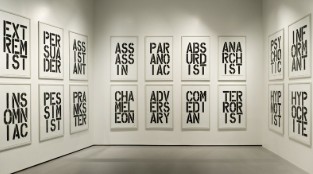François Pinault: The Eye That Listens
Where aesthetics risk vanishing before they are understood, François Pinault emerges as a radical and silent patron of our time — not collecting for prestige, but preserving fragments of the world before they become desirable. From Brittany’s sawmills to Venice’s palaces, his visionary eye has built one of the world’s most poetic and provocative collections: a map of human fragility, urgency, and truth. Pinault listens, not possesses. He offers, not accumulates. His legacy is not luxury, but meaning.
COLLECTORS OF MEANING: WHEN ART BECOMES A RESPONSIBILITY
Charlotte Madeleine CASTELLI
6/16/20252 min read


Where aesthetics risk dissolving before they are truly understood, François Pinault stands as a silent and radical collector-patron, one who listens to the deep pulse of the present rather than chasing the fleeting shimmer of trends. Born in working-class Brittany and raised amid the clamour of a sawmill, Pinault built his fortune from wood, later founding a luxury empire — yet his most precious legacy remains invisible to the eyes of the market: it is made of courageous choices, of artworks that do not decorate but provoke, of open wounds embedded in the fabric of contemporary art. His collection — one of the most significant in the world, with over ten thousand works — stands out not for its quantity but for the vision behind it: an eye that seeks not validation but friction; that does not invest in icons, but in visions. Artists such as Rudolf Stingel, David Hammons, Maurizio Cattelan, and Cindy Sherman find in his holdings a space of listening and recognition, not possession. His exhibition spaces — from Palazzo Grassi and Punta della Dogana in Venice to the Bourse de Commerce in Paris — are not mere containers, but devices of meaning, mental architectures where art breathes, decomposes, and regenerates itself. One emblematic gesture of this philosophy was revealed during the opening of Palazzo Grassi in 2006, when a wax sculpture by Urs Fischer slowly began to melt during the exhibition, symbolising collecting as combustion, as time burning, ephemeral yet necessary presence. Pinault does not impose his curatorial vision; he rigorously selects fragments of the world worth preserving before they become desirable. He was among the first to offer space to African-American artists, to recover marginal voices, to bring forgotten names like Llyn Foulkes back into the light — the latter once declared, after the sale of a piece: “Pinault gave my work a second birth.” This ability to return meaning and new life to artworks before they become institutionalised is what separates the true patron from the mere buyer: the former does not purchase, he recognises; he does not accumulate, he listens; he does not dictate, he dialogues. In a world dominated by spectacle and the commodification of art, Pinault represents the silent guardian who tends to the wound without the need to display it. His collection is an emotional map of our time, a lens through which to decode the complexity, urgency, and fragility of the human condition. While other collectors shout their taste through record-breaking auctions, Pinault weaves his narrative with patience, discretion, and the humility of one who knows that art cannot be possessed — it is traversed, safeguarded, and offered. Few know that throughout the creation of his collection, François insisted on maintaining an almost intimate ritual: he selected each piece personally in direct dialogue with the artists, often exchanging long letters and conversations that rarely reach the public eye. He is also famously drawn to organic and ephemeral materials, a preference partially inspired by his childhood experiences, when wood and nature dictated the rhythm of his life. In him lives that rare and necessary breed of collectors who do not pursue glory but responsibility, who do not gather objects but possible futures. In this visionary and silent gesture, François Pinault reminds us that collecting — today more than ever — is an act of poetic justice, a way of caring for the present and sowing meaning for the generations to come.
© Charlotte Madeleine Castelli | All rights reserved
